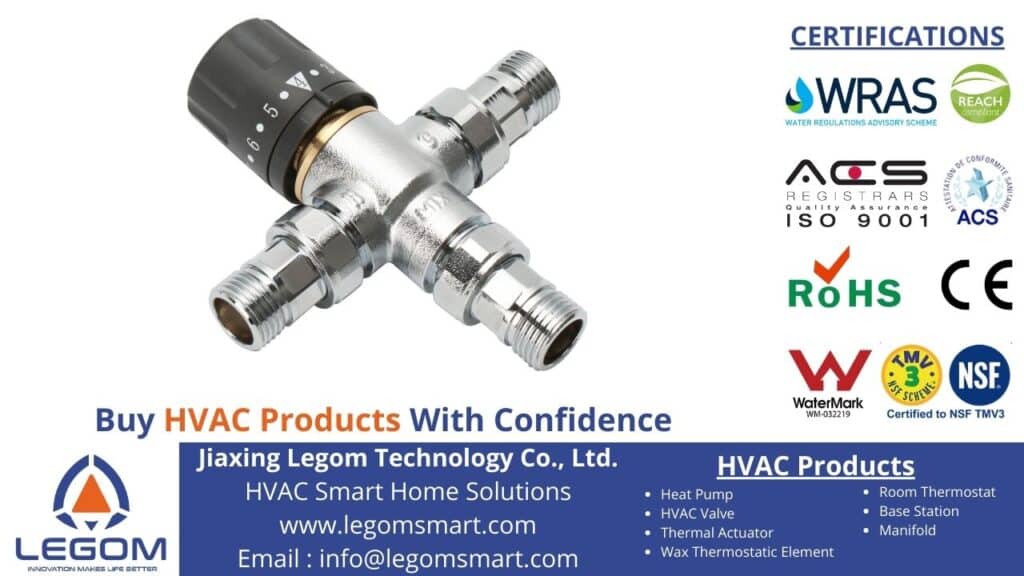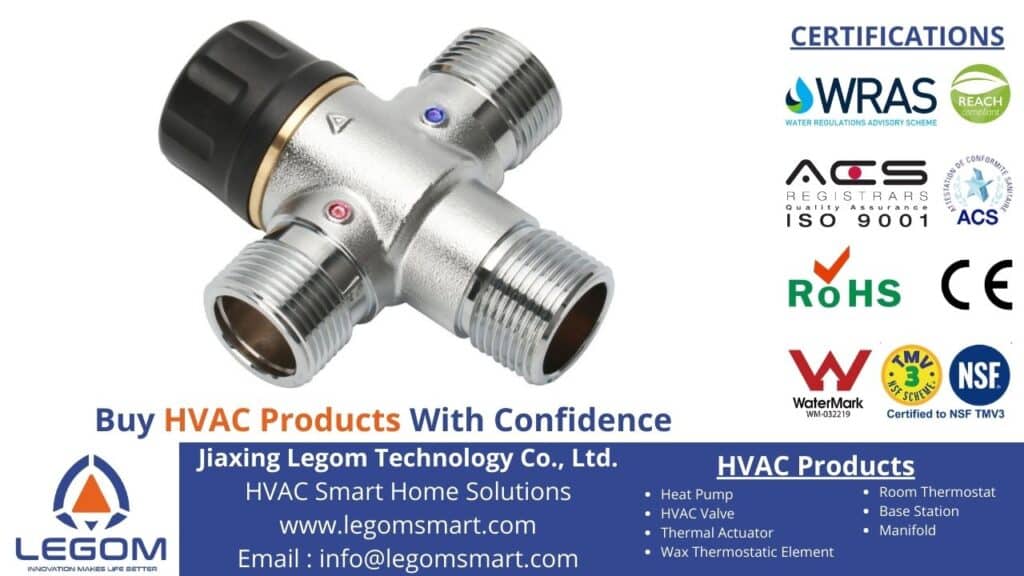
A Thermostatic Mixing Valve: An Alternative to the Tempering Valve
For a safe and reliable hot water supply system, installing a tempering valve is essential. This valve ensures that hot water from the tap won’t cause injury, protecting your hands from scalding. This valve works as a mixing valve that combines cold and hot water to achieve a safe temperature.
The problem of blistered skin due to water temperature that is too hot will not be something you experience in the future if there is a tempering valve in your HVAC system at home or in offices and commercial buildings. A technician usually works with tempering valves and thermostatic mixing valves to ensure the safety of building owners when operating HVAC systems in any season. The technician must have a license to be able to install thermostatic mixing or tempering valves.
However, there are key differences between tempering valves and thermostatic mixing valves. Tempering valves are slower to respond to temperature changes compared to thermostatic mixing valves, which offer more precise and rapid adjustments. For applications where water temperature control needs to be highly accurate and respond quickly to changes, such as in healthcare facilities, a thermostatic mixing valve is essential. However, if precise temperature control is not critical, a tempering valve can be a more economical choice.
Contents
Do We Need a Tempering Valve?
You need a tempering valve in your hot water system to ensure the outlet water temperature meets local regulatory standards and your expectations. There are types of tempering valves for heat pumps, hot water systems, solar hot water systems, gas hot water systems, and electric water heaters. You need to choose one that suits your needs and capacity.
Benefits of Maintaining Hot Water at a Certain Temperature
Then maintaining the hot water temperature at a certain temperature such as a minimum of 60 degrees Celsius can provide extraordinary benefits. You can prevent the growth of legionella bacteria which can settle in the water tank and cause certain diseases. High water temperatures in storage tanks can kill bacteria. A tempering valve ensures that the water reaches these high temperatures to eliminate bacteria, while also ensuring that the water that comes out of the tap is at a safe temperature that won’t cause skin blistering.
Therefore, the tempering valve will mix the hot water with cold water before the water goes to the next equipment at a lower temperature so that it is safe for the user. Domestic hot water systems usually use a specific temperature range. What you need to pay attention to is if the water you store in the system is below 140°F, the risk of bacterial growth can increase.
Sooner or later this low temperature can pose serious health risks to building occupants who use the water for daily needs. The ideal temperature should be right at or above 140°F. In certain areas, it may require temperatures as hot as 160°F. then the tempering valve will continue to maintain the temperature coming out of the sink or shower outlet in the range of 115°F to 122°F.
The tempering valve will be on standby at the outlet of the hot water storage tank. The water that comes out of there will then immediately enter the hot water distribution facility.
Installing a Tempering Valve Correctly
There is a reason why the technician who will install the tempering valve must have a license. If they install tempering valves haphazardly and without clear instructions, you will get a reduction in water pressure. This can increase resistance to water flow so that the system will not work properly. Licensed technicians will not make mistakes when installing the valves.
This important valve will mix hot and cold water to reach a safe and appropriate water temperature. There will be no water pressure if it decreases and there will be no buildup of mineral sediment as long as the technician installs it properly and according to the instructions.
Technicians have understood and practiced for many years that tempering valves whose diameter is smaller than the hot and cold-water pipes can disrupt the flow of water. This will reduce the water pressure. Then if he makes a mistake in applying a valve that can block the water flow and pressure his work will end in vain. Technicians with good work experience and licenses will prove for themselves that they can install a tempering valve that matches the size and according to the manufacturer’s instructions.
The technicians who have an assignment to maintain water heaters will also know how to clean valves to avoid the buildup of sediment debris which can block water flow.
Legom HVAC Valves

Upgrade your tempering valves to a thermostatic mixing valves with Legom. At Legom, we offer high-quality, affordable thermostatic mixing valves that provide precise temperature control and rapid response to temperature changes, ensuring safety and comfort in all applications. As a manufacturer, we ensure our valves meet the highest standards of performance and reliability. Additionally, you can find the right sizes and materials for any HVAC valves from Legom. We sell a wide range of HVAC system components, from the smallest parts to the largest, and provide other essential heating system equipment needed for various applications across all industries. Trust Legom for all your HVAC needs.
